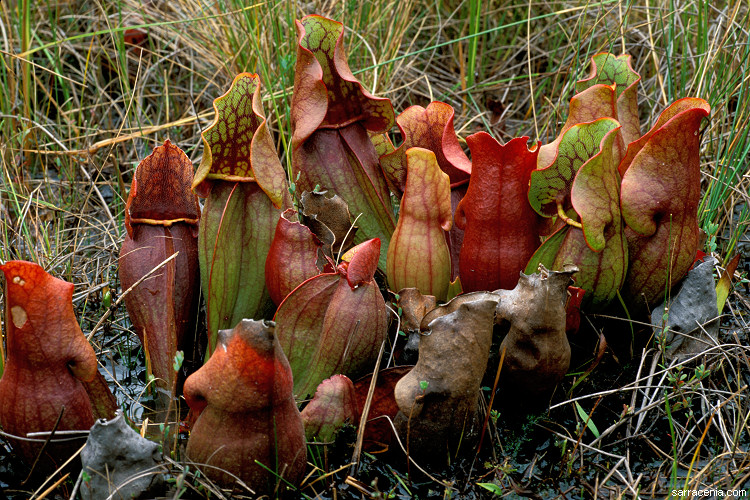
Spring has sprung in our neck of the woods. Plants of all kinds are budding, blooming, and otherwise making their presence known. This period of explosive growth still surprises me every year, and reminds me that—much like humans—plants need food to fuel themselves too! And, as a new study has shown this week, some plants may be as picky as humans about the food they consume, and may also modify their own “behaviour” to score living snacks that have the nutrients they need most.
A team of French researchers studied North American Sarracenia pitcher plants under lab conditions. These notorious carnivorous plants grow slippery sets of leaves that look like a delicious trumpet-shaped flower, fooling unsuspecting insects into coming in for a snack. The poor suckers then fall into a pool of enzymes at the bottom of the “flower” and are slowly digested by the plant. It’s  long been established that different types of Sarracenia trap different kinds of insects—pollinators vs. ants, for example. But this study posits an unexpected way Sarracenia may be luring bugs to their watery doom—highly tailored scents, or volatile organic compounds (VOCs).
long been established that different types of Sarracenia trap different kinds of insects—pollinators vs. ants, for example. But this study posits an unexpected way Sarracenia may be luring bugs to their watery doom—highly tailored scents, or volatile organic compounds (VOCs).
The team tested four different kinds of Sarracenias; two naturally occuring, and two human-crafted hybrids.
“The study team placed each plant in an airtight bag and pumped purified air through it. The odor-causing molecules produced by the plants were trapped on filters for the researchers to analyze and identify. The team found that the different pitcher plant species each produced their own unique bouquet of VOCs. […]
The researchers then compared the VOCs produced by each plant with the types of insects it caught. The species that produced more floral scents trapped more bees, moths and other flying insects; pitchers that produced more fatty acids caught more ants. These results held up even when the researchers took into account the way that the pitchers’ size and shape might limit what sorts of insects they could easily trap.”
The authors acknowledge this is early days yet; a study like this shows a strong correlation and more work is required to establish causation. But the possibility that Sarracenia may be “ordering” what they crave off the local bug menu via the powerful method of scent is pretty cool! It definitely shortens the gap between us and other life with whom we share this delicate planet. If, in the long run, all this proves is the need for more human empathy for our ecosystem… Well, I’ll take that too!